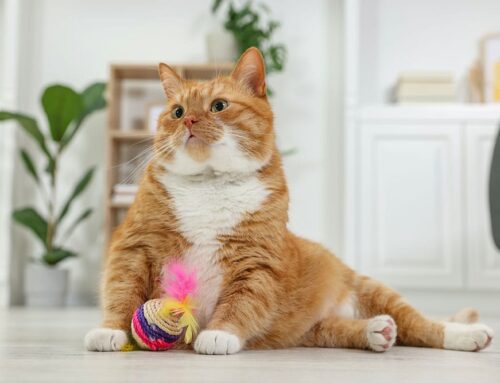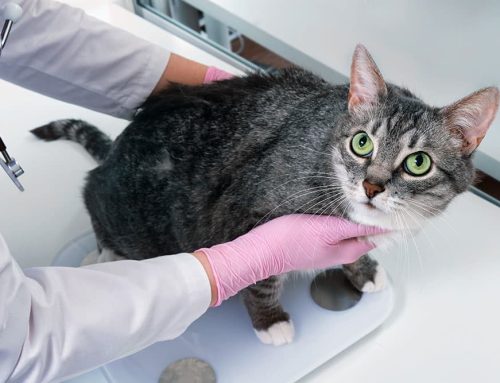Being a pet owner means preparing for your pet’s every life stage, including end of life decisions. Deciding to euthanize a beloved pet can be tremendously difficult, and you want to ensure you make the right decision at the right time for your pet. Our Mobile Cat and Dog Vet team wants to help by providing information to help you navigate this difficult time.
Assessing your pet’s quality of life
Quality of life (QOL) refers to your pet’s ability to participate in and enjoy life. To help make this assessment easier for pet owners, a veterinary oncologist created the HHHHHMM QOL scale, which assesses the following seven factors:
- Hurt — Your pet’s pain level and ability to breathe are the most important QOL issues. Consider whether your pet needs pain medication, and if their drugs are managing their pain. Also, consider if your pet needs oxygen supplementation.
- Hunger — Your pet must eat enough to maintain their health. Consider if your pet is able and willing to eat, if hand feeding or other steps encourage eating, and if they need a feeding tube to maintain nutrition.
- Hydration — Your pet must drink enough to stay hydrated. Consider if your pet exhibits dehydration signs, such as a prolonged skin tent and tacky mucous membranes, and if you are able to administer any necessary subcutaneous fluids.
- Hygiene — You need to keep your pet clean and dry to prevent skin irritation and infection, so consider if your pet is able and willing to groom themselves appropriately. If not, are you able to keep them clean and dry?
- Happiness — You want your pet to not only live, but also to enjoy life. Consider if your pet expresses joy and interest in life. Do they interact with your family? Do they still enjoy playing with their favorite toys?
- Mobility — If your pet has mobility issues, can you assist them when they need to use the bathroom? Can you reposition them frequently to prevent bedsores?
- More good days than bad — Track your pet’s good and bad days, so you know when their bad days outweigh the good, which indicates their QOL is compromised.
Each factor is scored on a scale from 1 to 10, with 10 being ideal. If the scores total more than 35, your pet’s QOL is considered acceptable to continue care. Lower scores indicate you should talk with your veterinarian about next steps.
Assessing your pet’s pain
Pets hide pain well to prevent showing any vulnerability, which can make assessing their pain level difficult. To help pet owners, a hospice veterinarian developed the BEAP pain scale to determine when pets are in pain. By observing your pet’s behaviors and actions, you can better understand how they are feeling. Factors to evaluate include:
- Breathing — Changes in breathing patterns, such as increased respiration rate and panting, can indicate pain.
- Eyes — Your pet’s eyes are extremely expressive, and you know your pet better than anyone. Look into your pet’s eyes for any concerning changes, such as depression, or dimness.
- Ambulation — Monitor your pet’s movement for slowness, hesitation when navigating stairs or jumping on and off furniture, stiffness, or limping.
- Activity — Watch your pet for changes such as decreased activity or engagement, agitation, and decreased response to stimuli.
- Appetite — Monitor your pet for appetite and drinking habit changes.
- Attitude — Attitude changes, such as hiding or an aversion to touch and affection, can indicate pain.
- Posture — Watch your pet when they are standing and sitting for signs such as weight shifting, tail tucking, hunching, and back arching.
- Palpation — Take note if your pet tenses or reacts unusually when you touch them in certain areas.
Knowing when your pet is ready
These tools can help you determine when your pet is ready for euthanasia. Other tips include:
- Consult a veterinarian — Our veterinary team is your best resource to help make this difficult decision. While you are the only one who can make the final decision, we are here to support you and help you know what is best for your pet.
- Remember your pet — Changes can occur gradually, and you may have a hard time remembering your pet when they were happy and healthy. Look at pictures or watch videos from before your pet became ill, so you have a clearer view of how their health has declined.
- Keep a calendar — Mark your pet’s good and bad days on a calendar to easily visualize when their bad days start to outweigh their good.
Saying goodbye to your pet

Saying goodbye to your pet is never easy, but with our Mobile Cat and Dog Vet team, you can experience this difficult situation in your home. Euthanizing your pet at home has many benefits, including:
- No traveling — Many ailing pets have mobility issues and transporting them to the veterinarian can be difficult for them and for you.
- Comfort — Pets typically are upset by the veterinary office sights, sounds, and smells. Euthanizing your pet at home allows them to remain where they are most comfortable.
- Privacy — Saying goodbye to your pet at home allows you to grieve in private, without encountering strangers.
Deciding to euthanize your pet is heart-wrenching, but these tools should help you make the right decision at the right time. If you would like to say goodbye to your pet in the comfort of your home, contact our Mobile Cat and Dog Vet team, so we can support you and your pet during this difficult time.








Leave A Comment